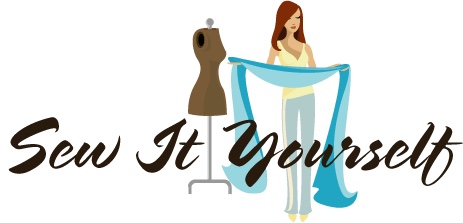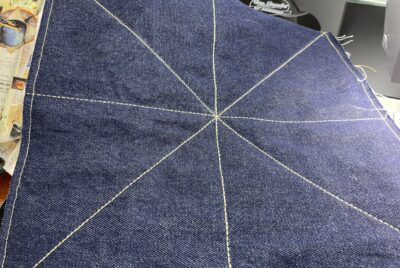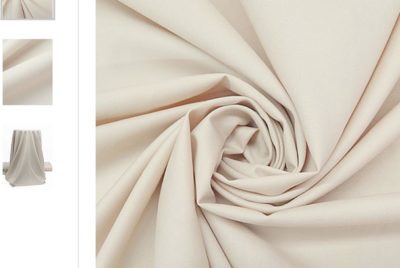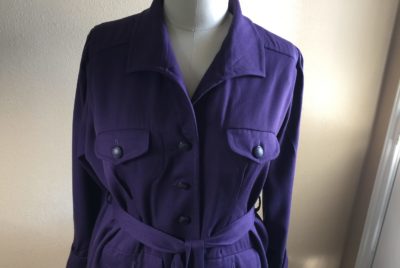7 Simple Ways to Practice Sewing Straight Line Stitches Straight line stitching How many times have…
Sewing Plan For Fashion Garments
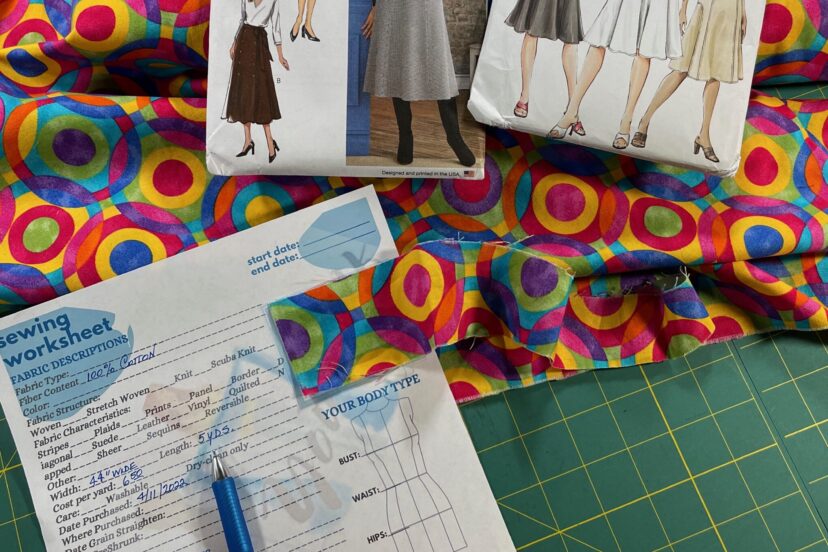
Sewing Plan For Fashion Garments
Creating a plan for anything is known to have a multitude of benefits. You might be aware of using a daily planner in your everyday life from tracking your physical health to just plain old brain dumps. But, you may not have quite figured out how to apply this structure to your artistic and creative side. Creating a sewing plan for fashion garments will prove to be a vital resource.
Your ability to mix a pattern with a piece of fabric to create a three-dimensional garment is a learned process. You will achieve it through a combination of observation and experience. Having a sewing plan or worksheet for you fashion garment will help you think through the steps. It also gives you the ability to visualize making the total garment.
Pattern Envelope Provides Vital Information
The illustrations on the front and back of the pattern envelope show you the intention of the designer. And it provides vital information for you to achieve the same, or similar look. The pattern envelope suggests a list of fabrics that are suitable as well as fabrics that may create a challenge.
The sewing plan for fashion garments begins with the fabric characteristics primarily to help your preferences. Then, you’ll easily identify the fabrics that appeal to you: the fiber content, fabric type, color and design.
Creating your own fashion garment allows you to consider the fiber content and how a fabric is made. The list of suggested fabrics on the pattern envelope gives you ideas of the types of fabrics to consider. But, if you know that certain fabrics cause you to perspire heavily during those hot humid, days of summer, and leaves wet underarm rings the first time you wear it, then fiber content is very important to you. Equally, you should notice how the fabric hangs on the model from photos on the front cover. The line design on the back of the pattern envelope gives you an indication of the difficulty of the pattern.
Planning Out Your Details
Using the pattern as a basic guide, you’ll make a variety of decisions depending on the final look you want, the type and fabric color you want, the neckline, sleeve length and width plus hemline most flattering to your body type. You decide if you want buttons, snaps, shoulder pads, underlining or lining. You decide how much time you have to spend and if your sewing ability matches the level of difficulty required.
Sewing plan for fashion garments help you track of each individual task you need to complete and encourages you to move on to the next one to see your ideas come to life.
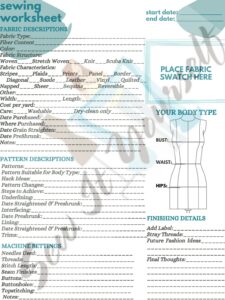
If you can’t remember whether you preshrank or straighten the fabric grain, you can simply flip the page and check if those tasks were completed. Same thing applies for keeping track of any trims, thread or any notions as well as any other changes.
When sewing your garment, you are involved with many pattern pieces to be cut and sewn from fabric, interfacing, underlining and lining. By using a worksheet you start with a good beginning, reducing confusion and forgetfulness.
Sewing Plan for Fashion Garments Specifics
As a result, sewing plan for fashion garments create a history of what you’ve made with detailed specifications. Those specs identify what flatters your body shape,flatters your body shape, as well as the quality of fabrics, how to handle and care for them.
Over time, you will come to understand the fabrics that keep you comfortable, the fabrics that flatter your body, the colors that enhance your skin tone, and the ones strong enough to handle a little fire without busting the seams.
Overall, when you look back over your sewing worksheets, you’ll see how you have evolved in fabrics knowledge, pattern design, sewing skills and most importantly, confidence.
Final Thoughts on Using a Sewing Plan for Fashion Garments
If you discover that your body responds better to natural fibers than the man-made fibers, then choose natural. Natural fibers tend to stay in fashion much longer than the man-made fibers. You may be the person that plans a fashion garment based on the fabrics you’ve collected rather than your patterns. If you purchase a fabric you love, you may not have a garment in mind at the time. You may find the next time you want a new fashion garment, you head straight for your fabric collection. Then, you can process eliminate the fabrics inappropriate for your pattern selection and the event you’re attending.
Planning your fashion garment by using a sewing plan or worksheet will help you keep track of the many ideas, changes and decisions you make on a project.
Embrace your growth!
